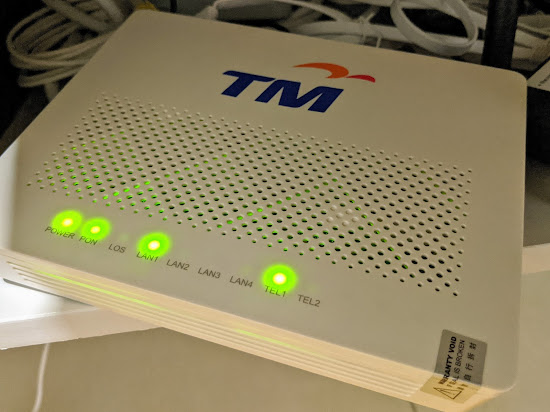Understanding The New SPM (2021) English 1119 Paper Format
 |
| This outline & those of other SPM language papers were made publicly available on the Lembaga Peperiksaan Malaysia (LPM) website. |
I'm sure you've seen the above being circulated on the internet. But, what does it mean? How does this paper compare to the current SPM paper for English? Do we have to change our testing practices in Form 4?
At this moment, information is sparse despite great public interest. As the head of the English panel at my school, my Form 4 colleagues will come to me for what to do & parents will ask me what this is about. Until we have very specific instructions from the ministry, this is what I will be telling my colleagues & parents based on the limited amount of information available to me from my intimate experience with the current SPM paper & second-hand information about the PT3 English paper.
Let me know if I got anything wrong or if you have more detailed information.
1. Very Similar to PT3-2019
In line with Kurikulum Standard Sekolah Menengah (KSSM) being fully implemented by 2021, we see changes being made to the 2021 SPM paper. Teachers who have taught PT3 classes will find the new SPM format very familiar (see PT3 outline in image below). Last year, a revised PT3 format for English was made publicly available on the LPM website along with very useful sample papers. For SPM2021, the outline was released without any details of what the exact questions will look like. We might have to wait until next year to get them, so my suggestion for the time being is to use the 2019 PT3 paper as a rough guide. |
| As you can see, there are many similarities between SPM2021 & PT3-2019. |
2. 4 Papers Rather Than Previous 2
The current SPM only tests Reading (Paper 2) & Writing (Paper 1), while Speaking is also accounted for via the ULBS classroom-based tests (which are tabulated into the final results in an undisclosed manner).As for SPM2021, there will be 4 papers for Reading, Writing, Speaking, & Listening respectively. It's good that the test is emphasizing all language skills rather than merely Reading & Writing.
3. Grades For Each Skill & An Overall Grade
PT3-2019 gives equal weightage to all 4 skills, up to 25%. Then, adds them all up for an overall grade. This is very similar to TOEFL & IELTS. For SPM2021, it is not specified in the outline, but it is highly likely that SPM2021 will follow suit.For the results of SPM2021, expect individual grades for Reading, Writing, Speaking, & Listening as well as an overall grade that totals the 4 individual grades. I think this is useful feedback to students, as they will know which skills they need to work on. Also, universities/employers can now set a minimum requirement for each skill.
4. Only 1 Out Of 4 Papers Will Be Assessed by LPM
Looking at the "Jenis Instrumen" row of the SPM2021 outline, only Paper 4 (Listening) has the "Pentaksiran Pusat" designation. This means that the evaluation will be carried out by LPM.What about the 3 papers without the "Pentaksiran Pusat" designation? It could very likely mean that Papers 1-3 will be marked by the respective subject teachers at school, as per the practice with PT3.
Is this good for bad? I would say that it is an overall good.
a. LPM already has established protocols with their select group of examiners to ensure validity & reliability of their examiners. From my observations of how the PT3 marking was carried out at my school last year, I'd say they have implemented the protocol successfully at that level.
b. Teachers at every school will be trained in the actual marking criteria. Thus, enhancing their ability to accurately & confidently help their students improve.
Areas for concern:
a. Poor English proficiency of some optionists may be a barrier. What is the latest on proficiency assessment of teacher? Last time we heard about this, a large minority still have not reached C1. This may affect quality of marking & the quality of the talent pool available in a given district to choose leaders/trainers from.
b. Logistical concerns for schools located in rural areas. How much oversight will these schools receive?
5. KSSM = Less Emphasis On Reading & Writing
All 4 skills are equally emphasized in the new curriculum with an equal amount of time allocated for each skill. This mindset is reflected in the SPM2021 outline. There are pros & cons for this.Pros
a. Students will feel more motivated & less stressed/bored about English, due to the larger variety of activities in the classroom.
b. More Malaysians can communicate in basic English, as students will be given time & opportunity to work on Listening & Speaking during lessons.
c. Malaysians have better soft-skills, due to interaction/teamwork experienced during classwork.
Cons
a. Malaysian will have weaker Reading & Writing skills. This won't be a problem when communicating locally in Manglish, but will present a significant barrier when communicating internationally or when studying abroad.
b. Gone will be the days when Malaysians have better grammar / writing skills than "native speakers". This is something that I've experienced personally when studying abroad. My written papers get praised over "native speakers".
c. Tuition centers can capitalize on the lack of focus in national education & market services that cater specifically to Reading & Writing skills (which are essential for success in most white-collar careers).
6. Possible Changes To The Marking Criteria For SPM Writing
From the outline provided, there is no indication of how the essays in the Writing paper will be graded. This gives me serious concern.Currently, SPM 1119 employs a robust rubric that awards the highest scores to essays that demonstrate excellent command of grammar, precise use of wide vocabulary, style & flair at CEFR C1-2 levels. A similar rubric was used for PMR as well.
However, the grading criteria for Writing in PT3 is benchmarked based on the Curriculum Target Level for Form 3, which is CEFR B1 Low (see table below). This means that those who write essays that demonstrate proficiency at the B1 Low level & above will get full marks for the essay. This means impeccable essays that would impress "native speakers" would get the same A score as "simple connected text" (see CEFR Global Scale table below), because they have both achieved the curriculum target.
If the same grading criteria were applied to the SPM English Writing paper, essays that demonstrate a proficiency level of B1 High & above will get full marks. B1 High is the target level for Form 5. It is understood that students will work on the higher B2-C1 levels during their tertiary years.
Pros
a. Students develop their Speaking, Listening, & Reading skill together with their Writing, rather than how it is now where Writing is emphasized in lieu of other skills.
b. Writing in English becomes more accessible to most Malaysians. Less wiery of having to perform & constantly falling short. More gradual / developmental adding of difficulty level.
Cons
a. Parents who want to give their children an edge in Writing (essential for studying abroad) will either opt out of public education or subsidize with tuition.
b. Teachers, like me, will feel a lot of pain in awarding As to essays we used to grade as Ds or Cs. This might drive me to start tuition classes with TOEFL/IELTS as a benchmark rather than SPM.
 |
| Curriculum Target Levels taken from the DSKP KSSM Bahasa Inggeris Tingkatan 4 publicly available at the Bahagian Pembangunan Kurikulum website. |
 |
| Common European Framework of Reference - Global Scale (2018) publicly available at the Council of Europe website. |
7. Expect Changes Over Time
PT3 paper was been tweaked several times since it's introduction in 2014. Expect similar tweaks to take place for SPM over the next few years. This is natural. Edison tweaked his light-bulb thousands of times. I tweak my classroom practices all the time too.I find it peculiar how our civil service is unrealistically expected to get things right the first time around. Of course, we should expect the best from the civil service, but we should also allow & encourage them to learn from & react positively to feedback. The only constant in life is change.



